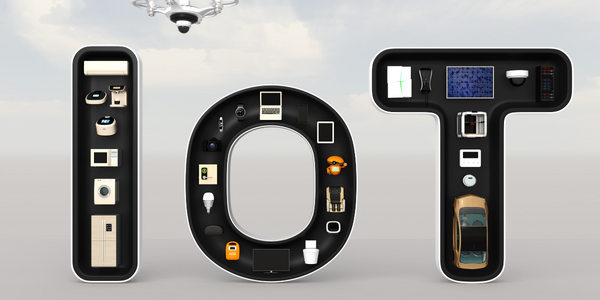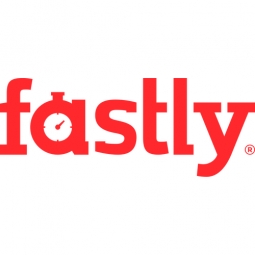Technology Category
- Analytics & Modeling - Computer Vision Software
- Infrastructure as a Service (IaaS) - Cloud Middleware & Microservices
Applicable Industries
- Equipment & Machinery
Applicable Functions
- Maintenance
- Product Research & Development
Use Cases
- Traffic Monitoring
- Transportation Simulation
Services
- Cloud Planning, Design & Implementation Services
- System Integration
About The Customer
Split is a global company that provides a robust feature delivery and experimentation platform. The platform serves billions of feature flags each day, monitoring and measuring the impact of newly released features so customers can link changes to key business objectives. Since its founding in 2015, Split has grown exponentially, from delivering 1 billion feature flags per month in 2017 to 1 trillion in 2020. The company's customers use feature flags to introduce and roll back changes swiftly, reducing the median time to recovery. Split has a worldwide customer base and is committed to maintaining high uptimes in every location.
The Challenge
Split, a global provider of a feature delivery and experimentation platform, was seeking a scalable and reliable edge cloud network to deliver feature flags to its customers. The company's customers use these feature flags to introduce and roll back changes swiftly, thereby reducing the median time to recovery. However, Split was facing challenges with conventional Content Delivery Networks (CDNs), experiencing purge times ranging from 10 to 30 minutes, which was unacceptable for their business model. Furthermore, as a company with a worldwide customer base, Split needed to maintain high uptimes in every location, a task that was proving difficult due to the potential for human error and the challenges of performance at scale.
The Solution
Split chose Fastly's edge cloud network for its scalability and reliability. With Fastly, Split achieved sub-second purge times in most cases, a significant improvement from the 10 to 30 minutes purge times they were experiencing with conventional CDNs. Fastly's edge cloud network also allowed Split to maintain high performance even during traffic peaks by delivering flags from the edge and strategically shielding their origin. Fastly's global network enabled Split to maintain high uptimes in every location, with Service Level Agreements (SLAs) offering uptimes as low as 99.99%. Fastly's developer tools and high-touch support also helped Split grow, providing guidance and support as the company developed new features or modified code. Split also utilized Fastly's real-time observability integrations with Sumo Logic and syslogs for real-time insights into their traffic.
Operational Impact
Quantitative Benefit

Case Study missing?
Start adding your own!
Register with your work email and create a new case study profile for your business.
Related Case Studies.

Case Study
Smart Water Filtration Systems
Before working with Ayla Networks, Ozner was already using cloud connectivity to identify and solve water-filtration system malfunctions as well as to monitor filter cartridges for replacements.But, in June 2015, Ozner executives talked with Ayla about how the company might further improve its water systems with IoT technology. They liked what they heard from Ayla, but the executives needed to be sure that Ayla’s Agile IoT Platform provided the security and reliability Ozner required.

Case Study
IoT enabled Fleet Management with MindSphere
In view of growing competition, Gämmerler had a strong need to remain competitive via process optimization, reliability and gentle handling of printed products, even at highest press speeds. In addition, a digitalization initiative also included developing a key differentiation via data-driven services offers.

Case Study
Predictive Maintenance for Industrial Chillers
For global leaders in the industrial chiller manufacturing, reliability of the entire production process is of the utmost importance. Chillers are refrigeration systems that produce ice water to provide cooling for a process or industrial application. One of those leaders sought a way to respond to asset performance issues, even before they occur. The intelligence to guarantee maximum reliability of cooling devices is embedded (pre-alarming). A pre-alarming phase means that the cooling device still works, but symptoms may appear, telling manufacturers that a failure is likely to occur in the near future. Chillers who are not internet connected at that moment, provide little insight in this pre-alarming phase.

Case Study
Premium Appliance Producer Innovates with Internet of Everything
Sub-Zero faced the largest product launch in the company’s history:It wanted to launch 60 new products as scheduled while simultaneously opening a new “greenfield” production facility, yet still adhering to stringent quality requirements and manage issues from new supply-chain partners. A the same time, it wanted to increase staff productivity time and collaboration while reducing travel and costs.

Case Study
Integration of PLC with IoT for Bosch Rexroth
The application arises from the need to monitor and anticipate the problems of one or more machines managed by a PLC. These problems, often resulting from the accumulation over time of small discrepancies, require, when they occur, ex post technical operations maintenance.

Case Study
Robot Saves Money and Time for US Custom Molding Company
Injection Technology (Itech) is a custom molder for a variety of clients that require precision plastic parts for such products as electric meter covers, dental appliance cases and spools. With 95 employees operating 23 molding machines in a 30,000 square foot plant, Itech wanted to reduce man hours and increase efficiency.



